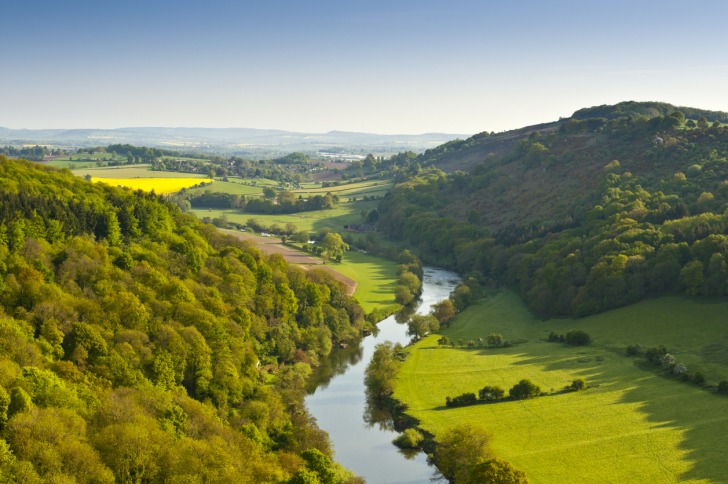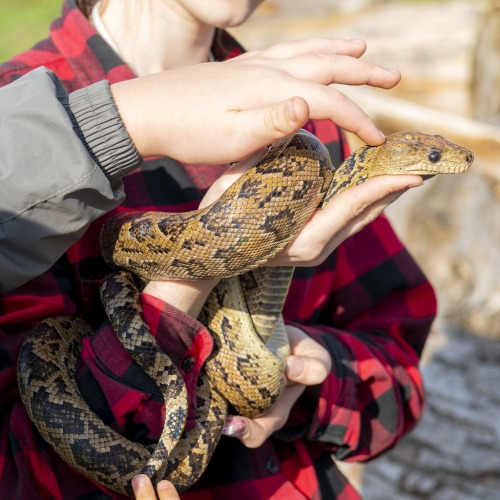When one envisions the idyllic landscapes of England, images of rolling green hills, charming villages, and historical landmarks likely come to mind.
However, hidden amidst this picturesque scenery is a question that may not cross the minds of many: are there snakes in England?
Unraveling the mysteries of England’s serpent population reveals an intriguing tale that combines biodiversity, myths, and safety considerations.
In this article, we delve into the world of snakes in England, exploring the species that call this country home, addressing safety concerns, debunking myths, and providing essential tips for nature enthusiasts.

Contents
So… Are There Snakes in England?
Contrary to popular belief, England is indeed home to several snake species.
While the idea of snakes slithering through the British countryside may sound like a scene from a suspenseful movie, the reality is less menacing.
The three main snake species found in England are the Adder (Vipera berus), the Grass Snake (Natrix natrix), and the Smooth Snake (Coronella austriaca).
The Adder, often mistaken for a venomous snake, is the only venomous species in England.
However, their bites are rarely fatal, and the snakes are generally non-aggressive unless provoked.
The Grass Snake, on the other hand, is harmless to humans and is commonly found near water sources.
Recognizable by its vibrant green color and distinctive yellow collar, this snake plays a vital role in controlling amphibian and insect populations.
The Smooth Snake, though rare, can be found in certain heathland areas.
Despite their scarcity, these snakes contribute to England’s biodiversity.
In the absence of snakes, such as in urban areas, it’s crucial to dispel the misconception that England is entirely devoid of these reptiles.
Understanding and appreciating their presence is key to fostering coexistence.
Snake Species in England
Adder (Vipera Berus)
The Adder, a member of the viper family, is the only venomous snake in England.
Found in a variety of habitats, from heaths to woodlands, the Adder is recognizable by its distinctive zigzag pattern along its back.
Despite their venom, Adders are generally shy and will only bite if threatened.
Bites are rarely fatal, and immediate medical attention is advised.
Grass Snake (Natrix Natrix)
Harmless to humans, the Grass Snake is a non-venomous species commonly found near water sources.
Recognizable by their vibrant green color and yellow collar, these snakes play a crucial role in controlling amphibian and insect populations.
They are generally docile and will often retreat when confronted.
Smooth Snake (Coronella Austriaca)
The Smooth Snake, though rare, can be found in specific heathland areas.
Similar in appearance to the Adder but lacking the zigzag pattern, these snakes are non-venomous and primarily feed on lizards.
Conservation efforts are essential to protect their habitats and ensure their continued presence.
In areas where snakes are absent, the balance of nature relies on other components of the ecosystem.
Urban landscapes may lack snakes, but their absence doesn’t diminish the importance of biodiversity in these environments.

Is it Safe to Go on a Trek in England?
Embarking on a trek through England’s countryside is generally safe, with the presence of snakes adding a touch of wildlife intrigue.
While snake encounters are rare, it’s essential to be aware of other potential dangers in nature.
Ticks, which can transmit Lyme disease, are prevalent in wooded areas, so proper precautions such as wearing long sleeves and using insect repellents are advisable.
Moreover, some areas pose risks, like uneven terrain, cliffs, and unpredictable weather conditions.
England’s diverse landscapes demand caution and preparedness.
Snakes, though fascinating, are just one element of the rich tapestry of wildlife that coexists with outdoor enthusiasts.
Interesting Snake Facts in England
Even in regions where snakes are scarce, myths and old stories about these reptiles abound.
The absence of snakes in certain areas does not deter the creation of legends and tales surrounding them.
From medieval folklore to modern urban legends, the fascination with snakes persists.
One such myth involves the belief that snakes can hypnotize their prey before striking.
While this notion may seem fantastical, it adds an element of mystery to the world of snakes.
Separating fact from fiction is crucial in fostering a better understanding of these creatures.
3 Safety Tips for Exploring Nature in England
- Stay on Designated Trails: Stick to marked paths and trails to avoid disturbing wildlife habitats and reduce the risk of stumbling upon snakes or other potential hazards.
- Wear Appropriate Clothing: When venturing into nature, wear long sleeves, pants, and sturdy footwear to protect against ticks, insects, and potential encounters with underbrush.
- Be Snake Aware: Familiarize yourself with the snake species in the area and their habits. If you encounter a snake, maintain a safe distance, and allow it to retreat. Avoid provoking or handling snakes, especially if their species is venomous.
Exploring the wild landscapes of England is a rewarding experience that unveils the country’s rich biodiversity.
While snakes add an element of intrigue, safety remains paramount.
By understanding the snake species present, dispelling myths, and adhering to safety tips, nature enthusiasts can enjoy the outdoors responsibly.
England’s countryside offers a rich view of the country’s ecosystems, each contributing to the intricate view of its natural heritage.
United Kingdom Safety Overview
READ THE FULL REPORT: United Kingdom Safety Review
Safety Index:
- OVERALL RISK: LOW
- TRANSPORT & TAXIS RISK: LOW
- PICKPOCKETS RISK: MEDIUM
- NATURAL DISASTERS RISK: LOW
- MUGGING RISK: LOW
- TERRORISM RISK: MEDIUM
- SCAMS RISK: MEDIUM
- WOMEN TRAVELERS RISK: LOW
Frequently Asked Questions
How many people die every year from snake bites?
Snakebite fatalities are relatively rare in England.
The last recorded death from an Adder bite occurred in 1975.
Globally, estimates suggest that tens of thousands of people die annually from snake bites, with the majority of incidents occurring in Africa and Asia.
Prompt medical attention is crucial to reducing the severity of snakebite effects.
Are all snakes in England venomous?
No, not all snakes in England are venomous.
The Adder is the only venomous species, while the Grass Snake and Smooth Snake are non-venomous.
Adders are generally not aggressive and will only bite when threatened.
Do snakes in England pose a significant threat to hikers?
Snakes in England, particularly the Adder, may bite if they feel threatened, but serious consequences are rare.
Hikers can minimize the risk by staying on marked trails, wearing appropriate clothing, and being aware of their surroundings.
Other hazards, such as ticks and uneven terrain, should also be considered during outdoor activities.











